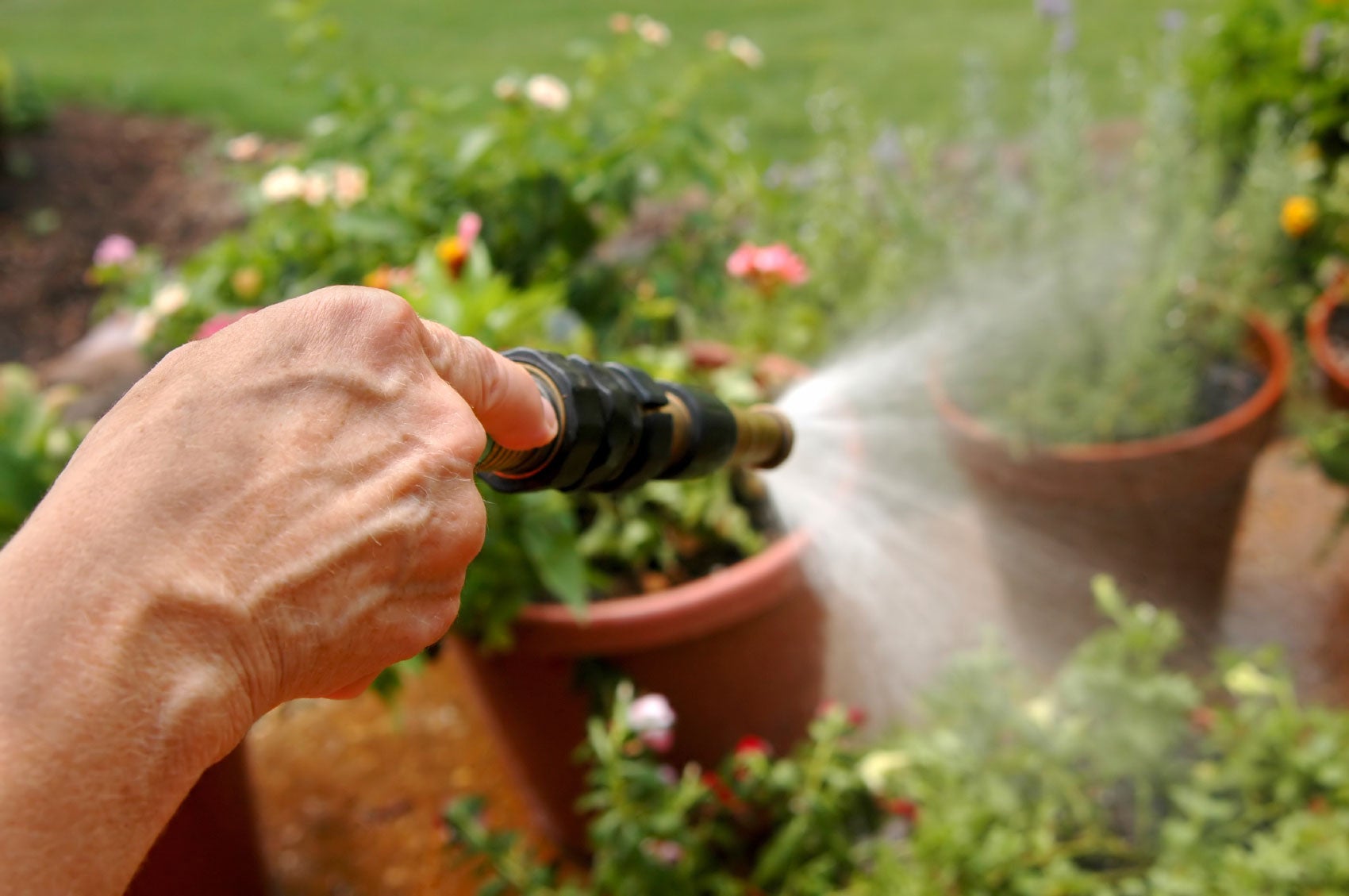When Potted Plants Are Too Wet: How To Avoid Overwatering Container Plants


Even the professionals may have trouble determining the exact water needs of a plant. The results can be disastrous due to the stress from overwatering or underwatering. Underwatering creates an inhospitable environment where plants can't intake nutrients and wither or die. However, overwatering potted plants is perhaps an even bigger worry. Nutrients are washed away, and mold or fungal issues may develop with overwatering. This is a key area for concern with container gardening, in particular.
A few tips and tricks can teach you how to avoid overwatering container plants for healthy, no-fuss greenery and ways of treating overwatered plants. Overwatering really is a fine line with many plant species. While we know plants need water, even cacti, the exact amount and frequency may be something of a mystery. Container plants with too much water may experience foliage die-off, rotten roots and tubers, and promotion of some pests or mold issues. All of these stress the plant and compromise its health. Potted plants that are too wet may even simply rot off at the crown or base.
How to Avoid Overwatering of Container Plants
An obvious method to prevent overwatering in potted plants is the use of a moisture meter. You also need to know your plant species and its watering needs. A broad guide for plants is to keep the top few inches (8 cm) of soil moderately moist. When this area is dry, apply water deeply and then allow the soil to dry to the touch again, before adding more water.
A low-tech solution is to get your fingers grimy. Push a finger into the soil up to the second knuckle or test the bottom of the post through a drainage hole. Never let the bottom of the container rest in a pool of water unless it is an aquatic plant, and even then, drain and refill the saucer frequently to prevent fungus gnats and root rot.
Low Moisture Plants
Cacti and succulents should have dry periods in the winter when active growth is not occurring but they need moderate water during the growing season. Examples of other low-moisture plants are:
Plants with Moderate Watering Needs
Tropical plants and understory specimens will need moderate water and high humidity. These include:
You can increase humidity with misting or by placing the pot on a saucer filled with pebbles and water.
Gardening tips, videos, info and more delivered right to your inbox!
Sign up for the Gardening Know How newsletter today and receive a free copy of our e-book "How to Grow Delicious Tomatoes".
High Moisture Plants
Extreme moisture needs are found in plants like:
Treating Overwatered Plants
There are some ways to save overwatered plants.
- Changing the soil to a grittier mix with better drainage may help.
- Check the drainage holes at repotting and ensure they are open.
- Use containers that help evaporate excess moisture, such as terra cotta and unglazed containers.
- Remove the plant from its growing medium and rinse the roots to get off any fungal spores that may be forming. Then dust the roots with a fungicide and repot.
- Move your plant to a shady location. A plant in shade uses less water and you can let it dry out a bit. After a few weeks, move it back to its preferred lighting level.
Sometimes you simply can't save potted plants that are too wet. Container plants with too much water need to be treated as soon as possible, as the longer the situation continues, the less likely there is to be a full recovery.

Bonnie Grant is a professional landscaper with a Certification in Urban Gardening. She has been gardening and writing for 15 years. A former professional chef, she has a passion for edible landscaping.
-
 Try The Trend – Turn Any Bed Into A Keyhole Garden With This Clever In-Ground Composter
Try The Trend – Turn Any Bed Into A Keyhole Garden With This Clever In-Ground ComposterKeyhole gardening is an efficient and sustainable practice that saves space. Get started on this DIY project quickly and easily with an in-ground composter.
By Bonnie L. Grant
-
 4 Superfast Composting Methods: Turn Waste Into Garden Gold In 30 Days Or Less
4 Superfast Composting Methods: Turn Waste Into Garden Gold In 30 Days Or LessTry the fastest composting methods to turbocharge your pile and transform kitchen scraps and garden waste into finished compost in just a few weeks.
By Mary Ellen Ellis